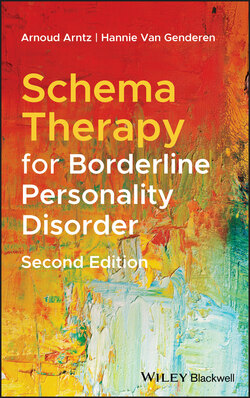Читать книгу Schema Therapy for Borderline Personality Disorder - Hannie van Genderen - Страница 47
Case conceptualization
ОглавлениеTogether the therapist and patient create a case conceptualization based upon the mode model (see Chapter 2). The different modes are described to the patient in terms she can understand and identify with (see Figure 3.1). They link the different modes with relevant experiences from the past and current complaints (see ST step by step 1.04 and 1.05)
It is recommended to link the relevant schemas to each mode in order to understand which schemas are triggered when a mode is active. Especially when the abandoned/ abused child is triggered it is relevant to know that in patient X the mistrust/abuse schema is most prominent and in patient Y defectiveness/shame is the central issue. This gives the therapist extra information about the content of the limited reparenting.
It is important that the most important problems and BPD‐traits of the patient can be understood as manifestations of the modes. There is no one‐to‐one relationship of specific BPD symptoms to modes. The therapist and the patient should collaborate in finding out what the function of the symptom is, before the symptom can be linked to a mode. For instance, self‐injury or a suicide attempt can have different functions, for example:
to punish oneself for a certain behavior or for having an emotional need (then it is a manifestation of the punitive parent mode)
to distract from emotional pain (then it is a manifestation of the detached protector mode)
to signal despair and alarm others that they should take care of the patient—a cry for help (then it is manifestation of the abandoned/abused child mode)
to make others feel guilty about how they treated the patient—as an act of revenge (then it is a manifestation of the angry child mode).
Even in the same patient, the same symptom may have different functions, depending on the triggers and the context, and should therefore be linked to different modes. Apart from symptoms and other problems having a function, symptoms and problems can also be consequences. For example, a low mood may be the consequence of being so often in the detached protector mode that there are too few positive experiences in the patient's life, in which case the low mood should be connected to the detached protector mode.
BPD patients usually have many problems and symptoms, therefore the therapist should not strive for completeness. It suffices to place the most important problems and symptoms in the mode model, keeping the problems that the patient experiences as most debilitating in mind.
The therapist creates a mode model together with Nora, with names for the modes that best suit the patient's experience, (Figure 3.1). They gradually expand this model with the relevant schemas and the elements from her childhood that are the cause of the problems (Figure 3.2).
